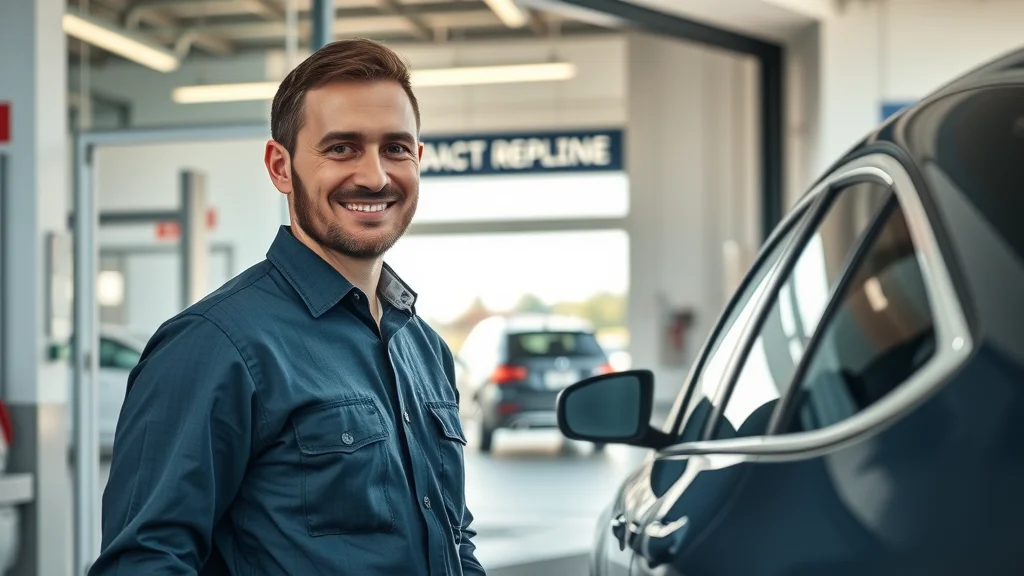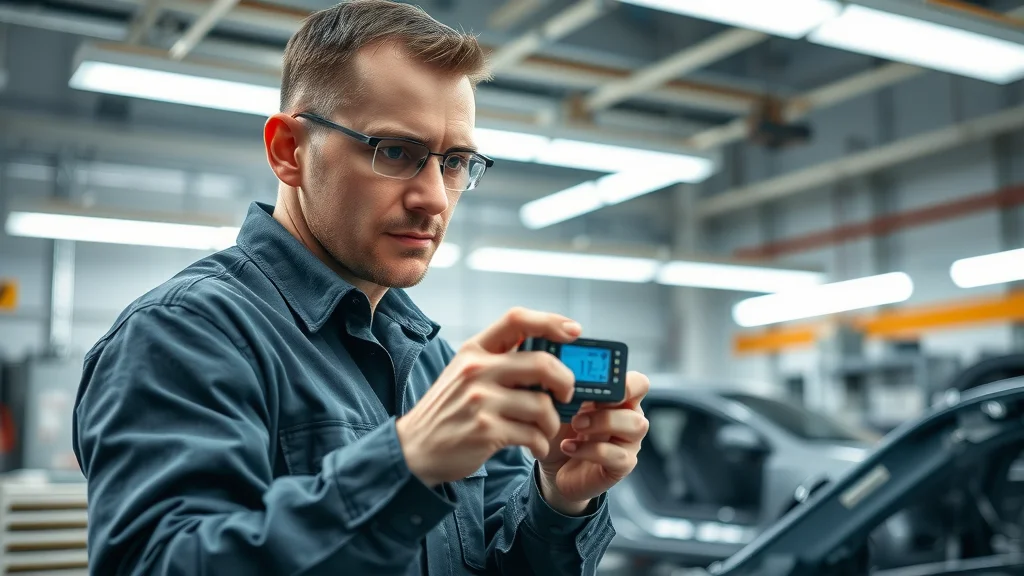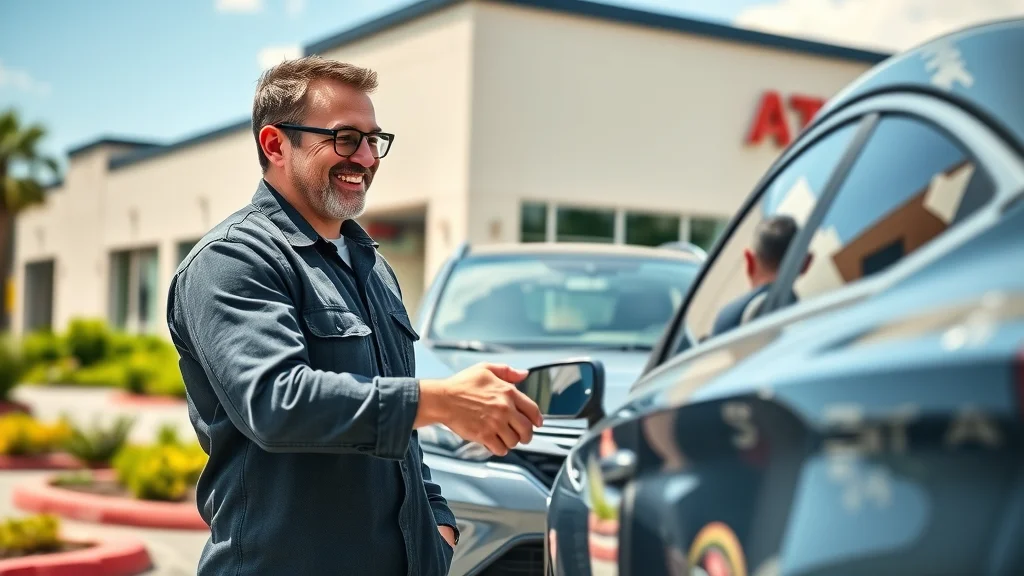Fact: Each year in the U.S., nearly 6 million auto collisions occur. That means as a vehicle owner, the odds are high that you’ll need to understand the basics of collision repair at some point. The difference between a smooth repair experience and months of stress? It all comes down to the right knowledge—knowing the process, your rights, and how to make informed choices when your car needs fixing. This guide delivers practical, step-by-step answers to help you reclaim your peace of mind after an accident.
“Did you know that nearly 6 million auto collisions occur annually in the U.S.? Understanding the basics of collision repair can be the difference between a quick, safe recovery and months of inconvenience.”

A Straightforward Look at Collision Repair: Why Every Vehicle Owner Needs to Know the Basics
If you find yourself staring at a dented bumper or crumpled fender, you might wonder where to begin. For many, the thought of navigating the collision repair process is overwhelming: insurance companies ask technical questions, body shops use unfamiliar jargon, and the pressure of getting your vehicle back quickly is real. But here’s what every vehicle owner should know: mastering the basics of collision repair puts you in control. You’ll be able to ask smart questions, spot red flags at an auto body shop, and understand how each repair step affects your safety and repair cost. By gaining some foundational knowledge now, you ensure that the next time an accident occurs, you can quickly restore your car to its former glory—with less stress and greater confidence.
Navigating repairs with your auto body repair shop need not be intimidating. Reliable auto body repair is a blend of science, skill, and communication. It’s about more than restoring cosmetic damage: it’s about ensuring structural integrity, value, and peace of mind. In this article, you’ll get a clear roadmap. Whether you’re seeking out estimates, negotiating with insurance companies, or just want to be prepared before something happens, this guide is your first step along the path to an informed, successful repair.
As you learn the essentials of the collision repair process, it’s equally important to know how to select a trustworthy repair facility. For a deeper dive into what sets the best shops apart and how to make a confident choice, explore this guide on choosing the best collision repair shop—it covers key factors and questions every vehicle owner should consider.
What You’ll Learn in This Guide to the Basics of Collision Repair
How the collision repair process works from start to finish
Key steps in auto body repair and what to expect at the repair shop
Understanding repair cost factors and insurance company roles
Tips to reduce stress as a vehicle owner after an accident
How to choose the right auto body shop for your needs
Defining the Basics of Collision Repair
What Is Collision Repair?
Collision repair defines the specialized process of restoring a motor vehicle that’s been damaged in an accident back to its pre-loss condition. It’s far more than simply fixing dents and repainting panels—it can also involve major structural repair, safety system checks, mechanical repairs, and advanced technology calibration. A trustworthy auto body repair shop will assess every aspect of the damage, from minor scratches and cosmetic damage to hidden damage beneath the surface. The end goal? Your vehicle not only looks like new but is also safe to drive, with all repair work done according to industry standards and the manufacturer’s specifications.
Understanding the basics of collision repair is essential because not all body shops or repair technicians are the same. You deserve a process that goes beyond quick fixes, delivering repairs that protect your investment and your well-being. Whether you’re dealing with a little fender bender or a more substantial collision, having a basic grasp of the auto body repair process helps you make informed decisions, reducing surprises during every stage of repair. And with the growing complexity of modern vehicles—think sensors, cameras, and advanced driver assistance systems (ADAS)— precision in both cosmetic and structural repair has never been more important.

Why Knowing the Basics of Collision Repair Matters for Every Vehicle Owner
Every vehicle owner faces important choices after a collision. Knowing the basics of collision repair allows you to protect your car’s value and your own safety. When you understand which questions to ask at the repair shop and how to recognize quality work, you can avoid potential pitfalls such as incomplete repairs, hidden damage left unchecked, or using substandard parts. This knowledge empowers you to choose between genuine OEM parts and aftermarket options, assess repair cost estimates, and make sure your insurance company handles your claim fairly. Most of all, it gives you peace of mind—confidence that your car is repaired right the first time around.
Learning these basics isn’t just about the mechanics of body repair—it’s also about ensuring the entire collision repair process is transparent and stress-free. From negotiating with insurance companies to verifying completed repairs via a final test drive, you’ll find that informed owners almost always have better outcomes. So, if you want to reduce repair time, save money, and avoid headaches, mastering the essentials is the smartest move you can make after any auto collision.
The Collision Repair Process: Step-by-Step
Major Steps of the Collision Repair Process |
Description |
|---|---|
Inspection and Estimate |
Comprehensive damage evaluation |
Insurance Approval |
Coordination with insurance company/companies |
Disassembly |
Detailed inspection for hidden damages |
Structural, Sensor and Body Repair |
Spec measurements realignment, auto body repair, ADAS recalibration |
Painting and Finishing |
Color and Finish matching |
Reassembly and Quality Check |
Ensuring all components accurately restored |
Test Drive and Delivery |
Confirming repairs and release to vehicle owner |
Step 1: Inspection and Estimate – What the Auto Body Shop Looks For
The first step at any reputable auto body shop is a thorough inspection and writing an estimate. Trained repair technicians will assess your vehicle’s cosmetic damage, measure for structural damage, and note any mechanical repairs that might be needed. They’ll use specialized measuring tools and may remove panels or use diagnostic computers to uncover hidden damage—problems not always visible after an accident. Why is this critical? Because undetected damage can compromise structural integrity and lead to future safety issues. Once inspection is complete, your auto body repair shop will provide a detailed estimate, including replacement parts, labor, and the projected scope of body repair work.
The estimate serves several important functions. Firstly, it gives the vehicle owner a clear understanding of what the repair process will involve and what costs might be covered by your insurance company. Secondly, it sets a baseline for communicating with both your auto repair shop and your insurance provider—helping ensure everyone is on the same page from the start. Always review your estimate carefully, and don’t hesitate to ask questions if any repair work isn’t clear. A good auto body repair estimate should break down parts, labor, paint, and any mechanical components separately, so you’re poised to make an informed decision about your vehicle’s care.
Step 2: Insurance Company Approval and Communication
After your inspection and estimate is complete, your repair shop will typically communicate with your insurance company to get formal approval before any collision repair process begins. This phase is often called the “authorization stage.” Your insurance company will review the estimate, possibly send an adjuster to look at your vehicle, and decide which costs they’ll cover. They may request more information or alternative options (like using aftermarket instead of OEM parts) to minimize repair cost. It’s important for you as a vehicle owner to understand your rights during this process and to ask your shop about the extent and limitations of coverage.
Some insurance companies have direct repair relationships with certain auto body repair shops. While this can make claims handling faster, direct repair arrangements are for the benefit of the shop and the insurance carrier, and you’re not obligated to use only those shops. You have the right to choose the auto repair shop that serves your needs best. Strong communication is key: a qualified repair technician will keep you informed and make sure all negotiations with the insurance company are transparent and in your favor. At this point in the auto collision repair journey, clarity between all parties protects your investment and enables a faster, smoother restoration of your vehicle.

Step 3: Disassembly and Discovery of Hidden Damage
With approval secured, the vehicle moves into the disassembly phase. During this step, your auto body repair shop removes panels and damaged parts to uncover hidden damage—issues not visible during the initial estimate. This is especially important after moderate to severe auto collisions, as damage behind the scenes (such as bent frames, compromised welds, or damaged mechanical components) can threaten safety and driveability if left untreated.
When hidden issues are found, the repair technician will update both the vehicle owner and the insurance company. In some cases, a revised estimate or supplemental claim is necessary. Disassembly safeguards your peace of mind because it ensures no shortcuts are taken. Only after all unseen damage is documented and approved do technicians move on to actual repairs. Skilled shops use digital measurement tools, detailed photography, and open reporting to confirm that the full scope of the body repair process is accounted for, saving you time (and potential headaches) later on.
Step 4: Structural Repair and Body Repair Essentials
Major collision repair jobs often require advanced structural repair. This step restores your car’s internal frame and support structure to its original specifications. Using computerized measurement tools, auto body repair technicians compare factory frame dimensions with your car’s current state—precisely correcting bends, welds, or kinks as needed. Alongside structural repair, outer panels (doors, hoods, bumpers) are replaced or restored to pre-accident shape. The auto body shop must pay careful attention to manufacturer repair procedures and certifications, guaranteeing both structural integrity and crashworthiness are fully reestablished.
If your car has advanced driver systems or sensors (like many modern vehicles do), proper calibration and testing are also part of this phase. This ensures every safety and assist feature works as designed after structural repairs are complete. By insisting on proper structural repair and original quality, you ensure your car performs—and protects—exactly as it did before the accident. Don’t be afraid to ask your auto body repair shop what measures they use to restore structural integrity and whether their work meets (or exceeds) industry standards.

Step 5: Painting, Finishing, and Detailing in Auto Collision Repair
Once all repairs and part replacements are complete, your vehicle moves to the painting and finishing area. Professional shops use computer-based color matching systems and high-quality bake booths to restore the exact factory color and finish of your car. This step is crucial for both the cosmetic and protective value of the paint job. Even tiny color mismatches, dust, or imperfections can reduce your car’s appearance and resale value. Experienced auto body paint technicians take pride in meticulous preparation—sanding, cleaning, masking, and priming before the first coat of new paint is applied.
After fresh paint is laid down, technicians refinish and detail each panel for a seamless, like-new appearance. Final detailing involves buffing, cleaning, and even checking for overspray or subtle blemishes. High-quality auto body repair ensures your vehicle’s cosmetic damage is completely erased, restoring not just its look but also its “first impressions” appeal. It’s the finishing touch that signals your car is ready for the road again—backed by expert attention to every detail.

Step 6: Reassembly, Test Drive, and Final Quality Inspection
After repairs, painting, and detailing, the vehicle is reassembled. This includes reinstalling all body parts, wiring, sensors, airbag modules, interior trim, and any removed mechanical components. The auto body shop will then conduct a final quality control check—inspecting for fit, finish, and proper operation of all systems. Any necessary adjustments are made before your vehicle is officially road-ready.
A reputable shop will always recommend (and perform) a test drive to verify that mechanical repairs, alignment, and electronic systems are functioning as intended. Only once the repair work meets both factory and shop standards will the vehicle be released to you. The final inspection provides peace of mind that your car is not just visually restored, but also drives and feels as it should, safeguarding your investment for the long run.
Choosing the Right Auto Body Shop for Collision Repair
Qualifications to look for in an auto body repair shop
Questions to ask about the collision repair process
How to compare repair cost estimates
Why certifications and equipment matter in auto collision repair
Choosing a trustworthy auto body repair shop is one of the most critical decisions in the collision repair process. Prioritize facilities with certifications from industry organizations like I-CAR or ASE, and look for evidence of ongoing training and use of factory-recommended parts. Ask about the specific technology they use for diagnostics, frame measurements, and paint matching—the best shops invest in modern tools that enable more precise and safer repairs.
Don’t hesitate to ask: What warranty do you offer on your repair work? Do you use OEM or aftermarket parts? How do you communicate updates throughout the repair process? Compare repair cost estimates from at least two shops, but remember—cheapest isn’t always best. Review the estimates for thoroughness, and favor clarity, transparency, and customer service. Certifications and up-to-date equipment are signs your car will be restored using the latest methods, protecting both its value and your safety as a vehicle owner.
Understanding Repair Costs and Working with Insurance Companies
Factors Affecting Collision Repair Cost
A collision repair bill depends on several key factors: severity of damage (cosmetic vs. structural), labor rates in your area, cost of OEM or aftermarket replacement parts, paint and materials, and potential hidden damage discovered during disassembly. The repair cost estimate should also reflect whether any cutting-edge calibrations or electronic resets are needed—common on newer vehicles with advanced tech. Additional variables include how quickly you need your vehicle, whether you choose additional detailing, and regional supply chain considerations (like part shortages).
Insurance companies play a big role here, covering some or all of the expenses depending on your policy and the nature of the accident. Always request a detailed invoice and ask your auto body shop to clarify the cost breakdown. The more informed you are about potential expenses, the more likely you are to avoid budget surprises or unnecessary upcharges during your collision repair process.
How Insurance Companies Handle Collision Repair Claims
Insurance companies usually require an itemized estimate before approving repairs. They may recommend partner body shops, but by law you can choose any auto body repair shop you trust. After reviewing damage, an adjuster may suggest lower-cost repair techniques or parts. Don’t be pressured to accept only what's offered—if you prefer OEM parts or find an estimate incomplete, you have the right to negotiate.
Communication between you, your auto body repair provider, and the insurer is crucial. Good shops help file supplemental claims if hidden damage is found. Keep detailed documentation, including accident photos, estimates, correspondence, and repair receipts. By staying proactive, you ensure your insurance company funds appropriate (not just minimal) repairs for your motor vehicle.
Negotiating with Your Insurance Company After an Auto Collision
As a vehicle owner, you hold more power than you might think! If you disagree with a recommended repair or part substitution, ask for clarification and supporting documentation. Obtain second opinions on both repair cost and necessary repairs, especially for major damage or totaled cars (“total loss” situations). Don’t feel forced to accept substandard work just because your insurance company says so.
Remember, the goal is to restore your car to pre-loss condition, both in appearance and function. Appeal decisions if needed, and leverage your auto repair shop as an advocate—they work for you, not your insurance company. Good documentation, research, and clear communication all support successful negotiation and ensure your collision repair journey ends with a safe, high-quality result.

Essential Tips Every Vehicle Owner Should Know About Collision Repair
Document the auto collision scene and damage
Know your rights as a vehicle owner when choosing a repair shop
Request OEM (original equipment manufacturer) parts if possible
Review repair process updates from the body shop
Schedule a test drive after repairs before final approval
These tips reinforce your position as an informed consumer. Always document accident damage and collect contact information at the scene to back up your insurance claim. Ask for detailed written estimates, and clarify repair options with both your insurer and shop—you aren’t required to accept just what is initially offered. OEM parts, while often pricier, help ensure long-term reliability and consistent performance, especially for newer or leased vehicles. Steady communication with your shop keeps surprises to a minimum, and a post-repair test drive guarantees no lingering issues compromise your safety or the car’s value.
People Also Ask About the Basics of Collision Repair
What are the steps in collision repair?
The collision repair process typically includes inspection and estimate, insurance approval, disassembly, structural and body repair, painting and finishing, reassembly, and a final test drive and quality inspection.
What are the 3 C’s of auto repair?
The 3 C’s are Condition (problem description), Cause (diagnosis), and Correction (repairs performed).
What are you expect to learn on a collision repair facility?
You can expect to learn about damage assessment, repair techniques, insurance processes, and safe vehicle delivery practices.
What is the rule of thumb for car repair?
A common rule is that repairs should not exceed the value of your car, and you should always get multiple estimates and understand your repair options.
FAQs About the Basics of Collision Repair
How long does the average collision repair process take?
Most standard repairs take from a few days to two weeks, depending on parts availability, severity of damage, and how quickly your insurance company responds. More complex jobs or special order parts can extend timelines.Will my car look and drive the same after auto collision repair?
Professional auto body repair shops are committed to restoring both appearance and performance. When repairs meet factory and industry standards, your car should look and drive just as it did before the accident.Are aftermarket parts as dependable as OEM parts in auto body repair?
Not always. While some aftermarket parts are adequate, OEM parts typically ensure the closest fit, reliability, and warranty protection. Discuss your options and concerns with your repair technician.How do I ensure the repair cost is fair?
Always solicit multiple detailed estimates, compare them for content, and check for hidden fees. An informed decision is your best defense against unfair pricing.Can I choose my own repair shop regardless of my insurance company’s recommendation?
Yes, you’re legally entitled to choose any qualified body repair shop, not just the ones on your insurance company’s “preferred” list.
Key Takeaways for Vehicle Owners on the Basics of Collision Repair
Understanding the collision repair process reduces stress after an accident
Working with a reputable auto body shop is crucial for safety and quality
Stay informed and involved throughout the repair process
Know your rights as a vehicle owner when it comes to insurance and repairs
If you’re ready to take your collision repair knowledge even further, consider how modern vehicle technology is transforming the industry. From advanced driver assistance systems to the latest in structural materials, understanding these innovations can help you make smarter decisions and ensure your repairs meet today’s highest standards. Discover more about the impact of new automotive technologies and how they affect your repair options by visiting our comprehensive overview on understanding vehicle technology in collision repair. Staying informed is the best way to protect your investment and drive with confidence, no matter what the road brings.
Ready to Begin Your Collision Repair Journey?
We'll help you restore your vehicle to pre-loss condition. Don't stress! Just come see us. https://bobcartersautobody.com/
Understanding the fundamentals of collision repair is essential for any vehicle owner. We aim to provide you with valuable insights and practical knowledge to help you get the best auto body repair outcome.
 Add Row
Add Row  Add
Add 


Write A Comment